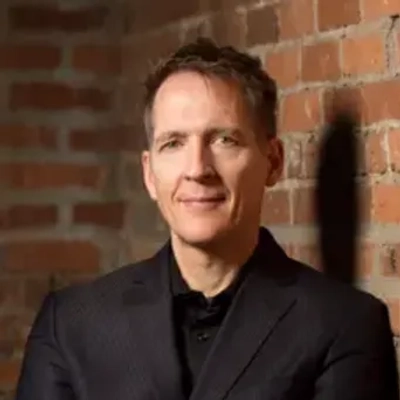Content Marketing Advice: What I Wish I Knew Starting Out
Content marketing can be a challenging field to navigate, especially for newcomers. This article compiles valuable insights from industry experts, offering a wealth of knowledge for those starting their content marketing journey. From focusing on quality over quantity to leveraging new technologies, these tips provide a comprehensive guide to success in the ever-evolving world of content marketing.
- Focus on Consistent Quality Over Volume
- Address Real Audience Needs and Wants
- Consider Micro-Conversions in ROI Calculations
- Prioritize Clarity and Helpfulness Over Complexity
- Balance Content Creation with Continuous Learning
- Integrate SEO Practices from the Start
- Leverage Podcasts to Build Authority
- Create Unique, Proprietary Content for Impact
- Target Specific Audience Pain Points
- Prioritize Content Distribution After Publishing
- Build Frameworks for Sustainable Content Marketing
- Align Content with Specific Traveler Concerns
- Tailor Strategies to Each Organization
- Diversify Tactics for Long-Term Success
- Foster Cross-Departmental Collaboration in Content
- Get to the Point Immediately
- Build Meaningful Relationships Over Vanity Metrics
- Publish Quickly and Optimize Based on Feedback
- Focus on Platforms Where Your Clients Are
- Create a Personal Brand with Your Own Website
- Embrace AI as a Tool for Content Marketing
- Solve One Specific Problem Repeatedly
- Approach Content Marketing as a Marathon
- Consistently Reinforce Basics to Build Trust
- Start Early on LinkedIn and Network Consistently
Focus on Consistent Quality Over Volume
Consistency gave me better results in content marketing than volume ever did. Initially, I pushed out as much content as I could, but most of it never ranked or brought in leads. Later, I started producing fewer pieces that were focused on intent and properly optimized, and each one turned into an asset. A single article that ranks and delivers steady leads is worth more than ten posts that go nowhere.
If I could go back, I'd tell myself to spend more time on keyword research and less time guessing what people wanted to read. Once I started targeting intent-driven topics, organic traffic became steady and predictable. A small set of comparison pages outperformed months of general blog posts because they were written for people who were close to making a buying decision. Those pages brought in almost twice as many demo signups.
I also realized that creating content alone wasn't enough. Distribution mattered just as much. Repurposing a piece into email campaigns, running it through paid ads, and resharing it on the right channels gave it new life. Without that push, even strong content didn't get the attention it could have.
What I'd tell my younger self is that content compounds when you treat it as long-term equity. A handful of strong and well-optimized assets will drive revenue faster than a backlog of filler posts that nobody sees.

Address Real Audience Needs and Wants
The most important piece of advice I would give to my younger self about content marketing is this: Don't listen to people when they tell you what they need - listen to what they actually want.
This lesson came from Kenny Kelley during one of my podcast interviews, and it completely changed how I think about content strategy. Early in my career, I was constantly trying to educate people about what I thought they should know about SEO, rather than addressing what they were actually searching for and struggling with.
For years, I was creating content based on what I believed businesses needed to understand about search optimization - technical explanations, algorithm theory, best practices that seemed obvious to me after decades in the industry. But what I wish I had known from the beginning is that successful content marketing isn't about showcasing your expertise - it's about solving the problems your audience is actually experiencing.
The Shift That Changed Everything:
When I started Boulder SEO Marketing, I finally learned to listen to the actual questions clients were asking during sales calls, the problems they brought up in support tickets, and the language they used to describe their challenges. That's when I developed our Micro SEO methodology - not because I thought it was theoretically superior, but because businesses kept telling me they needed faster results and clearer ROI from their SEO investments.
The content that performs best on our website isn't the sophisticated technical guides I'm proud of writing - it's the practical, problem-solving pieces like our SEO pricing guide that directly address what people are searching for when they're ready to hire an agency.
What I Wish I'd Understood Sooner:
Your audience doesn't care how smart you are - they care whether you can solve their specific problem right now. The most successful content I've created over the years has always started with real conversations with real people, not keyword research or competitive analysis.

Consider Micro-Conversions in ROI Calculations
My one piece of advice to my younger self would be to look beyond traffic and direct sales when measuring the success of content marketing. Early on, I focused too heavily on traffic and immediate conversions, which often gave a narrow and incomplete view of content marketing performance.
I wish I had understood earlier the importance of micro-conversions, actions like content-driven phone calls, clicks on directions, or subscriptions to newsletters. These are critical touchpoints in the user journey, especially for businesses offering high-consideration services or offline experiences, and they deserve to be factored into ROI.
Today, I calculate content marketing ROI by assigning an estimated gross profit to both macro and micro-conversions. For example, if the site offers demo bookings, I calculate the average conversion rate into paying customers and assign an estimated profit value to this micro-conversion. Other micro-conversions have lower conversion rates into paying customers, so I assign them a smaller value, but I still include them in the ROI model to reflect their real impact. This approach gives me a much more realistic, full-picture view of how content contributes to long-term business growth.

Prioritize Clarity and Helpfulness Over Complexity
I'd tell my younger self not to overthink content marketing. When I first started out, I convinced myself that every blog post or piece of content had to be long, polished, and filled with industry jargon to sound credible. The problem with that approach is that it creates a barrier between you and the people you actually want to reach. Most business owners, especially small ones, don't care about fancy marketing terminology; they just want simple answers to their problems.
What I've since realized, and what drives the way we approach content at Brew House Creative, is that clarity beats complexity every time. A short, practical blog post that explains one concept clearly or offers one useful tip often has more impact than a thousand-word essay that tries to cover everything. I wish I'd known earlier that being human, approachable, and genuinely helpful builds trust far faster than trying to look impressive. If I could go back, I'd tell myself to stop worrying about sounding like a textbook and start focusing on writing content that feels like advice from a friend who happens to know marketing really well.

Balance Content Creation with Continuous Learning
If I could give my younger self one piece of advice about content marketing, it would be to invest as much time consuming content as creating it. When you are starting out, the instinct is to focus all your energy on production: writing articles, building decks, and creating campaigns. What I came to learn is that your output is only as strong as your input.
Reading widely, and not just marketing material, is one of the best investments you can make. History, economics, science, biographies, and even fiction provide context, examples, and ways of thinking that sharpen your work. They give you a broader lens through which to view your customers' challenges and help you find more original ways of expressing ideas.
This kind of broad awareness does not come quickly, but it is worth the effort. Over time, it allows you to draw on a deep bank of references and perspectives. It also helps you avoid the trap of repeating the same narrow industry talking points that everyone else is using. The marketers who stand out are usually the ones who connect ideas across fields and make them relevant to their audience.
As a bonus tip, I would remind myself not to tire of content too soon. Marketers live with their own work every day and feel it has run its course long before the market has really seen it. The audience's attention is limited, and most people will only ever see a small share of what you produce. Repetition, consistency, and the discipline to keep amplifying good content are far more powerful than constantly trying to reinvent.

Integrate SEO Practices from the Start
If I could give my younger self advice about content marketing, I'd say learn about SEO as soon as possible. When I first started, I focused on writing helpful and interesting posts, but I didn't know how much search engines could help me reach the right people.
I wish I had paid more attention to how keywords, headlines, and even small changes can boost your reach. Knowing how to write for both people and search engines makes a big difference.
Looking back as the owner of Inspire To Thrive, I can see how much faster I could have grown if I had used SEO best practices from the start. It's not just about rankings or chasing trends.
It's about helping the right audience find you, which is what every business wants. If you're starting out, don't ignore SEO. Even basic steps can help your content work harder for you.

Leverage Podcasts to Build Authority
The biggest channel I overlooked early on? Podcasts. When I started out, I poured most of my energy into social media because it felt like the obvious path. What I missed was how powerful podcasts, especially video podcasts, can be in setting you apart. They show that you actually have something to say, not just something quick to post. And because podcasts are a more complex production that requires more effort, fewer people are willing to commit to doing them. That's exactly why they work: while everyone else is busy chasing TikTok trends, podcasts give you space to build authority and distinguish your brand.

Create Unique, Proprietary Content for Impact
If I could give my younger self one piece of advice about content marketing, it would be to stop letting keyword tools dictate your editorial calendar. Early on, I'd see a keyword with high search volume and low competition and think, 'Perfect, we'll win this one.' What actually happened was that we produced the same bland content as everyone else, experienced a small spike in traffic, and no one remembered us. Eventually, our rank would drop off, and so would our clicks and impressions.
What I wish I'd known is that the content that creates long-term impact is the content only you can create. That might be your own proprietary data, your unique takes, or your customers' real stories. When we finally started publishing our own research, like our annual SaaS onboarding benchmark report, everything changed. Even though the search volume for 'SaaS onboarding benchmarks' was tiny, industry blogs, analysts, and even competitors started citing us. We began showing up in AI summaries because we were the only original source. Salespeople could send the report to prospects as a credibility booster. The lifetime value of that one piece of content dwarfed all the cookie-cutter blog posts we'd done before.
My advice is to resist the temptation to chase easy keywords. Use keyword tools for insight, but don't let them steer you into being an echo. Instead, ask 'What can we publish that no one else can?', 'What is a take on this topic no one else has covered?' and build from there. It's slower, but it builds authority and trust that no algorithm change can take away.

Target Specific Audience Pain Points
I would tell my younger self to stop trying to please everyone with content.
When I first started out in content creation, I was guilty of using broad, generic messaging. I thought that by casting a wide net, I'd catch more fish.
The reality was the opposite: I ended up attracting all sorts of leads, many of them the wrong fit. Projects dragged, expectations didn't match, and it drained energy.
The real turning point came when we rewrote our marketing copy to specifically target marketers who were frustrated with unreliable development teams.
Almost immediately, our lead quality improved and client conversations became far more productive.
I wish I had known this from the start. It would have saved me so much headache, accelerated our growth, and allowed us to build stronger, more meaningful relationships with the right clients.

Prioritize Content Distribution After Publishing
If I could shake my younger self by the shoulders, I'd say something like this: The job is not done when you press publish. That's when it starts.
When I first started, I obsessed over writing the perfect article. I'd slave over each sentence, hunt down the perfect keywords, and hit publish in the belief I had conquered the universe. And then crickets.
What I would have liked to know is that developing the content is half the battle, and it's the easier half. The operation itself is about distribution.
An inspired piece of content that no one sees is a costly diary entry. I've learned that you must spend just as much time sharing your content as you do writing it. Getting it in front of the right audience is key.
That means promoting it manually in the appropriate online communities, emailing the individuals you mentioned, contacting newsletters, and sharing that particular blog post in a LinkedIn thread, as a short video on social media, and through a series of tweets.
Content marketing is not really about filling a void with words. It's about making a connection. The allure of your content is the bridge, but you still need to go out and invite people across.

Build Frameworks for Sustainable Content Marketing
Stop chasing volume and start building products and frameworks. Early on, I thought success meant producing an endless stream of posts, blogs, and social updates. What I wish I'd known is that sustainable content marketing isn't about doing more—it's about creating repeatable systems that align with your brand story and business goals.
If I had anchored my efforts around my proprietary frameworks earlier, I would have saved years of trial and error. Framework-driven content provides consistency, establishes you as the authority, and amplifies your influence far more effectively than sporadic posting. My advice to new founders is this: don't just create content, create a lens through which all your content flows. It will keep your messaging clear, your energy focused, and your audience deeply engaged.

Align Content with Specific Traveler Concerns
My first plan was output-focused. Three blogs a week, as the gurus recommended, and most disappeared into the void. One message changed everything: a traveler said our note about the Mekong border fee removed her last worry, and that's when she booked. Specific worry, specific fix. My advice to my younger self is to pick one real traveler worry, write the answer, and then stop.
What I wish I'd known starting out is that the pace of your content should follow the audience, not the plan. These days, I start with a conversation. I talk to a recent guest, ask what nearly stopped them, turn their words into the headline, then place the piece where our travelers hang out. I add clear follow-ups and speed up the pace or slow down as interest shifts. By doing that, bookings and shares have improved, and I don't miss the content treadmill.

Tailor Strategies to Each Organization
If I could give advice to my younger self about content marketing, I would emphasize the importance of understanding that effective strategies vary dramatically across different organizations. Having worked with clients ranging from solo entrepreneurs to multinational corporations, I've learned that what works for one business often fails for another. I would advise taking the time to truly understand each client's unique market position and audience before developing content strategies. This foundational knowledge will save countless hours of revising campaigns that weren't properly aligned with business goals from the start.

Diversify Tactics for Long-Term Success
I would have told my younger self that no single tactic, no matter how well it performs initially, will work forever. In content marketing, audiences evolve, platforms change their algorithms overnight, and what performed well last quarter might flatline next month. What got results last quarter could easily fall flat next month. In the beginning, I had one or two tactics that worked well.
That was my principal mistake: I tried to rely too heavily on my winning strategies from the start. If I had known then, I would have tested various forms of content, experimented with different ways to deliver it, and used data to make decisions. Consistency is important, but so is a sense of curiosity. We should be willing to experiment before we start receiving negative feedback.

Foster Cross-Departmental Collaboration in Content
I would stress the importance of collaboration across departments from the beginning. Early on, content lived in isolation, disconnected from sales, design, and product. That siloed approach made campaigns feel incomplete and less impactful overall. I wish I had integrated content marketing as a shared responsibility sooner. Collaboration multiplies insights, ensuring messages resonate effectively across diverse touchpoints.
Today, we involve cross-functional teams in brainstorming and feedback processes continuously. Content thrives when it reflects the organization's voice, not just marketing's. My younger self needed to understand that content works best when co-created broadly. Silos slow growth, while collaboration accelerates innovation consistently across industries. That realization changed how we design content ecosystems for every client today.

Get to the Point Immediately
My number one piece of advice is to get to the point immediately. I love content marketing, and it's the main type of marketing I use to promote my agency. However, you can spend days creating genuinely helpful content, but if you're waffling for half a page as an introduction, no one will stick around to see if what you're offering is any good. As soon as I realized that I needed to get straight to the valuable content (and stay there), I found my articles being shared more, and engagement rates doubled. Keep it simple and don't give your readers' eyeballs a chance to glaze over. If you have to start skim reading to get to where you want, it's a bad article. Get to the actionable insights!

Build Meaningful Relationships Over Vanity Metrics
One piece of advice I would give my younger self is to focus on building meaningful relationships rather than chasing vanity metrics. Initially, I paid too much attention to likes, shares, and impressions. They felt like progress, but they did not reflect true success. Over time, I realized that engagement from the right audience is far more valuable than broad reach. A smaller group of loyal followers can have a greater impact than thousands of people who simply scroll past content.
I also wish I had understood the importance of trust in content marketing. Creating content that resonates and builds genuine connections leads to long-term results. When the audience trusts you, business outcomes follow naturally. The key is to prioritize depth over numbers and focus on meaningful engagement that creates lasting value. This approach shapes sustainable growth and a strong brand presence.

Publish Quickly and Optimize Based on Feedback
I wish I had known how much more important it is to get a piece of content out that's 80% complete rather than spending hours chasing the last 20%. It's simply not worth it.
Write your piece of content, get it out there, and see what the feedback is. Then, optimize it based on the feedback you receive from people and in Google Search Console.
I would've progressed much further and faster if I had followed this approach.

Focus on Platforms Where Your Clients Are
Working in marketing, here's what I often heard when I was younger: "You need to be on every social media platform."
I tried this approach many times at different companies, and it almost always turned out to be a waste of time and money. The truth is, you don't need to be everywhere. You need to be where your clients actually are, and then focus on doing a better job than your competition on those channels.

Create a Personal Brand with Your Own Website
Start early and create a personal brand with your own website and domain. The usual techniques apply to that website: backlinks, high-quality, consistent content.
This approach will pay dividends in a few months and snowball over the years. Your own site with a high DR (Domain Rating) is your own launchpad for future projects. You can get new sites indexed with DR within days or weeks.

Embrace AI as a Tool for Content Marketing
If I could advise my younger self about content marketing, I would emphasize the importance of learning AI software. Translating knowledge into technology adds value. Savvy content marketers view AI as a research and drafting tool that frees them up to strategize, manage client relationships, and solve creative problems.
Five years ago, I should have experimented with AI writing tools, learned prompt engineering, and combined AI for efficiency with human insight. Marketers who will succeed will be those able to work with AI, focusing on business objectives and audience concerns. AI will take over routine content creation, making strategic thinking and audience relationships even more valuable.
Rather than fight against AI, professionals should embrace it to lower their cognitive load and focus more of their attention on strategy, tailored guidance, and creative brain work. I should have concentrated on skills that complement AI and on developing genuine relationships with customers, instead of keyword stuffing and posting content at arbitrary times.

Solve One Specific Problem Repeatedly
I would advise my younger self to focus on solving one specific problem repeatedly rather than trying to demonstrate expertise across multiple topics. The biggest mistake I made was creating broad content that showed I knew about many things instead of deep content that proved I could solve specific problems better than anyone else.
Early in content marketing, the instinct is to showcase comprehensive knowledge to appear credible and attract diverse audiences. I created content about strategy, operations, leadership, and technology, believing this demonstrated valuable expertise. However, this approach made it impossible for prospects to understand exactly what problems I solved or why they should choose me over competitors.
The breakthrough insight came when I shifted to addressing one recurring client challenge through multiple content angles rather than multiple challenges through single pieces. Instead of writing about "10 business strategy tips," I focused exclusively on "why strategic initiatives fail during implementation" and explored this problem through case studies, frameworks, process guides, and diagnostic tools.
This focused approach created several unexpected advantages. Search rankings improved dramatically because I became the definitive resource for implementation strategy rather than competing with thousands of generic business advice articles. More importantly, prospects arrived already understanding my specific value proposition rather than requiring education about how I could help them.
The strategic lesson is that content marketing works through depth, not breadth. When you become the go-to resource for solving specific problems, you attract qualified prospects who need exactly what you offer rather than general audiences who might be interested in various services.
This transformed content creation from educational broadcasting into strategic positioning that directly generates business opportunities by establishing clear expertise rather than general credibility.

Approach Content Marketing as a Marathon
Give yourself time to grow. Content marketing is a long-term investment where results compound over time. The blog post you wrote five years ago can still bring in leads today. Don't get discouraged by an initial lack of engagement; keep going even when it feels like no one's listening. The real secret is to stop approaching content like it's a sprint and embrace it as the marathon it truly is. Focus on steady, sustainable progress rather than immediate results, and you'll outlast the majority of competitors in your space.

Consistently Reinforce Basics to Build Trust
If I could go back, I'd tell myself to focus on showing up consistently with helpful content, even when it feels repetitive. Early on, I thought I needed to be clever or produce something new every time, but what really builds trust is reinforcing the basics—like walking sellers through what an as-is cash sale actually looks like—over and over until it clicks for them. People don't need the flash; they need the clarity and reassurance.
Start Early on LinkedIn and Network Consistently
If I could give my younger self advice about content marketing, it would be to start early on LinkedIn and treat networking as part of the strategy from day one. I remember when Spectup was just getting started, I focused heavily on creating content but underestimated the power of consistent visibility and engagement.
Posts would go up, but without interacting with others or building relationships, the reach and impact were limited. Over time, I learned that commenting thoughtfully on others' posts, sharing insights, and connecting with peers creates an audience that actually listens, engages, and trusts you.
Starting early gives you the advantage of building credibility gradually, experimenting with formats, and learning what resonates without pressure. Networking alongside content creation also turns visibility into opportunity, because the people you engage with become advocates, collaborators, or even future clients. Honestly, the earlier you embrace both posting and connecting, the faster your brand and influence grow.



